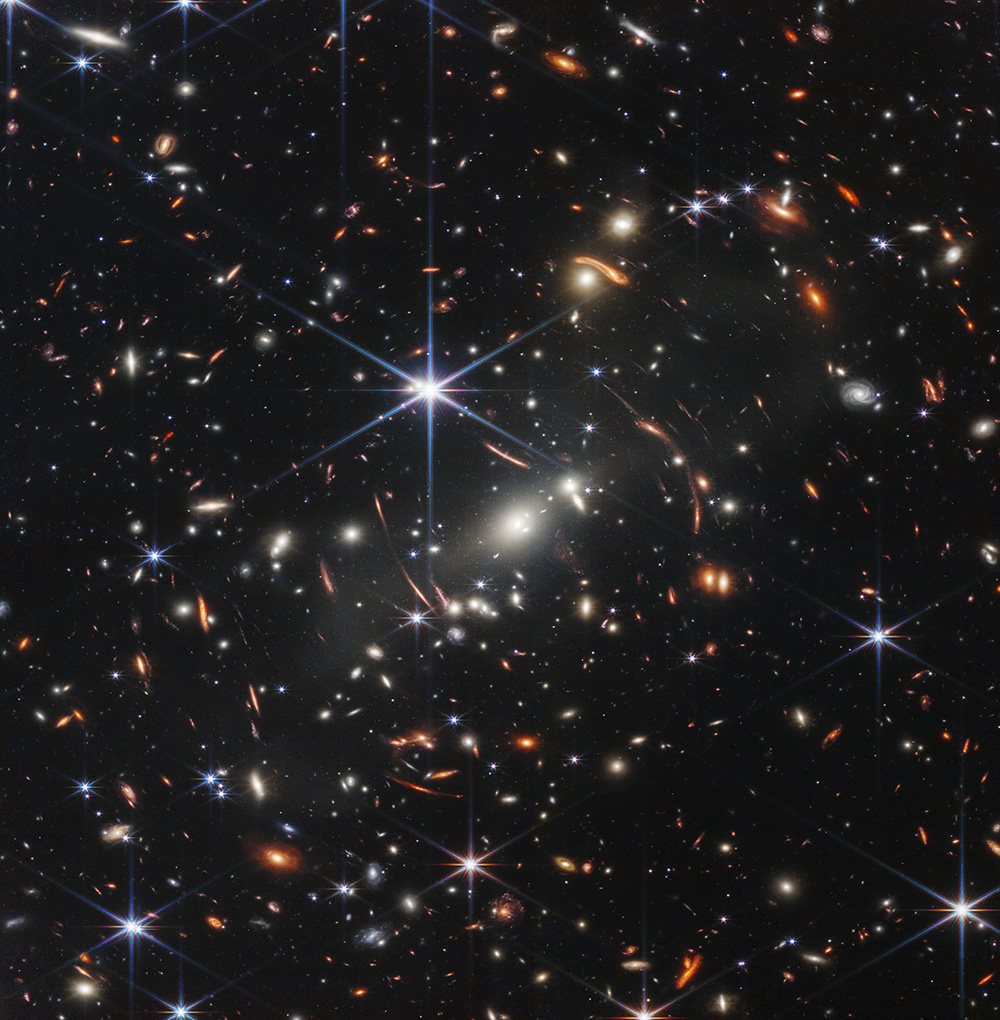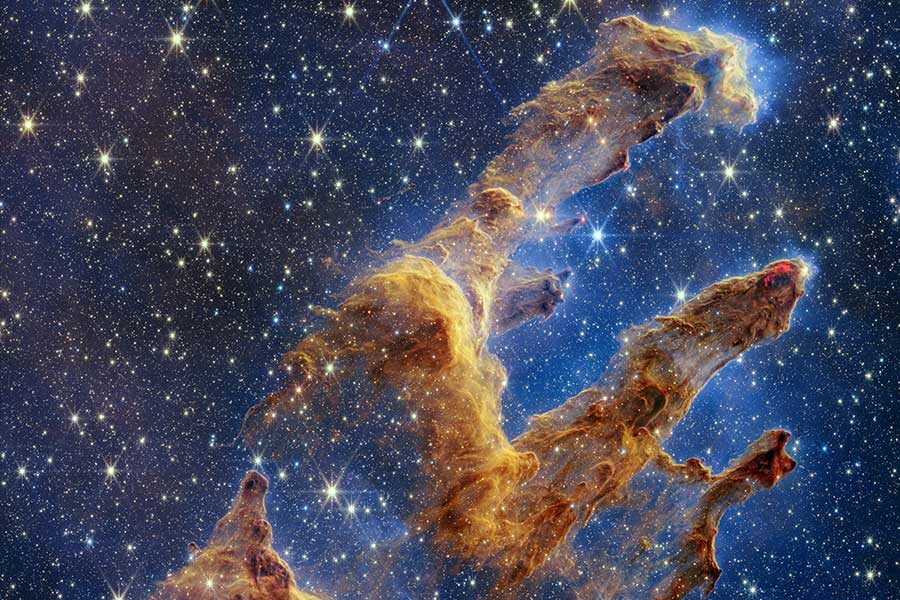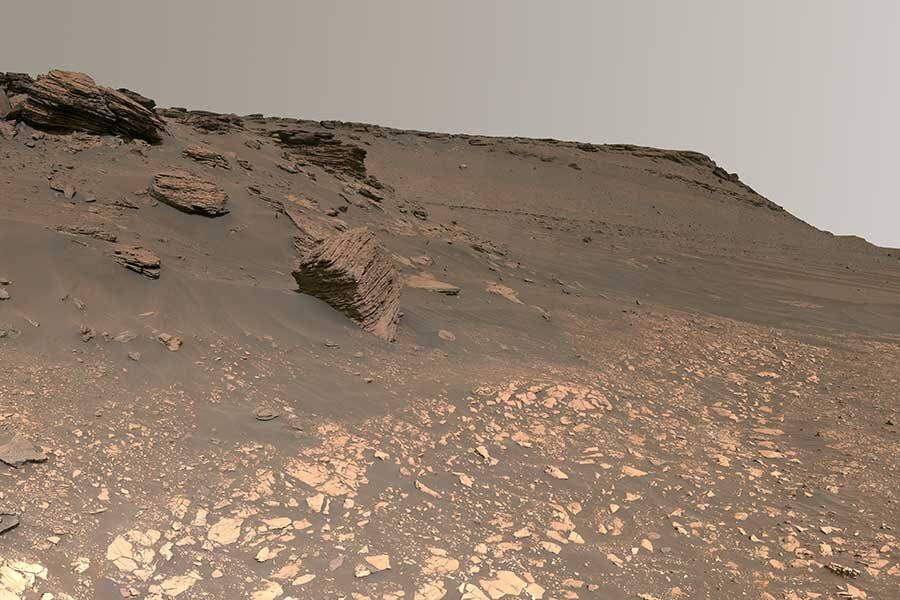An abundance of astro images can make up (a little) for cloudy skies and other things in life that may keep us from observing.
Clouds.
They’re the worst.
Especially when it’s the last total lunar eclipse until 2025, and the skies are socked in. Or when it’s the peak night of [insert your favorite meteor shower here], and there are nothing but overcast conditions for miles around.
Or when we’re headed into our third consecutive La Niña winter in the Northern Hemisphere.
It also sucks when you’re stuck inside because your knee goes out, or the dog is sick, or it’s one of those nights where you just can’t even. Crisp and clear skies right outside the door feel like a mean-spirited taunt.
Despite our wants and our best intentions, there’s always something that can, and often will, interfere with astronomical pursuits. Or maybe that’s just me.
I’ve been stymied in my stargazing for a good while now, mainly by cloudy skies but also by personal obligations and health concerns. To make myself feel better, I’m trying to find ways to embrace joy even when I have both the weather and my own limitations stacked against me.
Which brings me to those big honkin’ space telescopes. It’s mind-boggling that we have even one of these, much less the dozens of telescopes, past and present, that have been launched into service.
I’ve put off writing about the James Webb Space Telescope, not because I had nothing to say but because I am still trying to form coherent sentences around the visceral reaction I have to each newly released image.

NASA / ESA / CSA / STScI
This reaction has so far taken one of two forms:
1. A loud exclamation — like, “Holy [expletive]!” — uttered more than once as tears stream down my face, then quiet mutterings of “Oh, my gosh” repeated over and over.
2. A sudden intake of breath, followed by yet more tears streaming down my face as I sit for a very long time with my jaw practically touching my sternum.
Either way, there are lots of awestruck, streaming tears.
Once I recover rational thought, I download the latest JWST image to use as the wallpaper on my phone and tablet. (Not on my laptop, though, where I have a gorgeous background image of the Pleiades.)
For weeks afterward, I’ll stop whatever I’m doing at regular intervals to stare at my lock screen. I’m not even kidding. The number of times I’ve turned my tablet toward my partner (again) to show him the JWST image of the Pillars of Creation while asking, “Will you look at this?!” may be too great for modern mathematics to quantify.

Science: NASA, ESA, CSA, STScI, Hubble Heritage Project (STScI, AURA) Image processing: Joseph DePasquale (STScI), Anton M. Koekemoer (STScI), Alyssa Pagan (STScI)
I’m not alone in my reaction. I keep thinking back to the live reveal of JWST’s first images in July, and how the presenting astronomers and space scientists themselves were giddy and at a loss for words — while I sat at home, watching the screen, laughing and (yes, again) weeping.
That first image of the lensing galaxy cluster SMACS 0723 plucked a string inside me, resulting in a thrumming surge of optimism, reassurance, and hope. I stopped worrying about the fate of humanity, for instance, because I no longer doubt that other civilizations in the universe have and will rise, flourish, and fall — all based on that tiny sliver of captured light.
Social media offers an instant astronomy fix, too. There’s astrophotography Twitter for nebulae, star clusters, planets, and sunspots. (I recommend @StargazerRob in particular.) On Reddit, there’s r/Astronomy and r/Astrophotography. And there’s always NASA’s Astronomy Photo of the Day.
Much of the ugliness of this world falls away when I pull up deep space photos, and I continue to be amazed by the images and video coming from Mars — beamed our way from another planet, y’all.

NASA / JPL-Caltech / ASU / MSSS
This doesn’t stop my frustration with uncooperative weather and the fact that I need a total knee replacement. My vicarious and virtual stargazing doesn’t clear the clouds or fix anything in my immediate environment. Nothing beats an eyeful of celestial photons in the chilly dead of night.
But, golly, other people’s astrophotography and images from our space telescopes can come mighty close. The literal astronomical shift in perspective offers respite and strength.
Which I suppose is a fancy way of saying that, even when I can’t get outside, I can keep my spirits up and my awe intact. I can still find solace in the stars. Given my predisposition to starry-eyed tears, I should probably keep a box of tissues handy.
 7
7









Comments
Howard-Banich
December 5, 2022 at 2:06 pm
I'm right there with you - sometimes I get so amazed by an image that I can't stop looking at it, and I marvel at humanity's abilities to see so deeply into the universe. And my eyes get a little moist too.
Howard
You must be logged in to post a comment.
Jen Willis
December 5, 2022 at 2:39 pm
Right? Who needs magic when there's astronomy?
You must be logged in to post a comment.
Yofiel 369
December 12, 2022 at 1:41 am
Every illness comes from the lesson of choices, knees are humility. Healing can be without surgery , you just need to find a master or directly with God settle the topic of changing yourself. What is at the top (sky) is at the bottom. The universe is a mirror of everything, life and the connections of the whole of existence
You must be logged in to post a comment.
Anthony Barreiro
December 5, 2022 at 5:05 pm
I'm sorry to be a wet blanket, but I have to add NEIGHBORS' LIGHTS to the list of things that interfere with skywatching. Last Tuesday 29 November the weather was clear and calm and Mars was about as close as it's going to get for the next nine years. I set up my refractor on the equatorial mount, because Mars would be too high in the sky for the altazimuth mount. A series of storms was marching across the northeast Pacific, and after that one clear night we would be socked in for a week or more. Of course that was the night my next door neighbors left their floodlights on all night, preventing even planetary observing.
And yes, looking at pictures is a great consolation. You can see way more detail in a photo than you will ever see through a telescope eyepiece.
But there's something about seeing the elephant for yourself ... .
You must be logged in to post a comment.
Jen Willis
December 7, 2022 at 1:35 pm
You're not wrong. Floodlights can ruin a perfectly good night of stargazing. The whole neighborhood here is now decorated for the winter holidays, and while I find the lights magical under our current cloudy conditions, I imagine I'll feel differently once the skies clear (*fingers crossed*).
You must be logged in to post a comment.
AB
December 15, 2022 at 8:52 pm
I have sucky neighbours too, whose arrival after 27 years of peace-and-no-people nearby has ruined more than my night sky. I sympathize with the floodlight issue.
Any chance of introducing them to stargazing and encouraging them to turn off the lights?
...nah, me neither 🙁
You must be logged in to post a comment.
AB
December 15, 2022 at 8:53 pm
I enjoy your articles. Best of luck with your knee, and I hope more lovely images give you a boost to heal when you get it done.
You must be logged in to post a comment.
You must be logged in to post a comment.